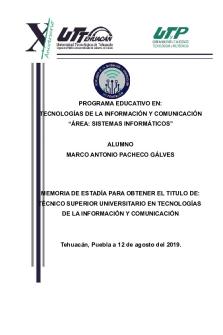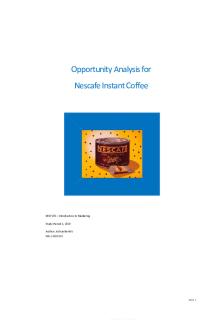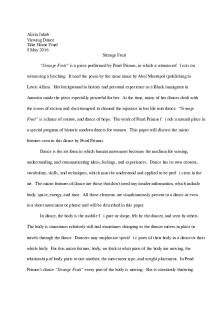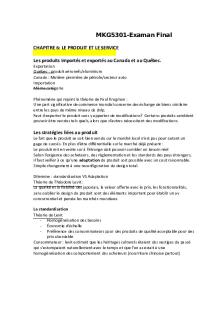Final 2013-2014 ggggggggggggggggggggggggggggggggggggggggggggggggg fffffffffffffffffffffffff ffffffff ffffffffffffff fffffffffffff fffffffffff PDF

| Title | Final 2013-2014 ggggggggggggggggggggggggggggggggggggggggggggggggg fffffffffffffffffffffffff ffffffff ffffffffffffff fffffffffffff fffffffffff |
|---|---|
| Author | khaixin lee |
| Course | Material Science |
| Institution | Universiti Malaya |
| Pages | 14 |
| File Size | 666 KB |
| File Type | |
| Total Downloads | 42 |
| Total Views | 130 |
Summary
ffffffffffffffff ggggggggggggggggggggggggggggggggggggggggggggggggg fffffffffffffffffffffffff ffffffff ffffffffffffff fffffffffffff fffffffffff ggggggggggggggggggggggggggggggggggggggggggggggggg fffffffffffffffffffffffff ffffffff ffffffffffffff fffffffffffff fffffffffff ggggggggggggggggggggggggggggggg...
Description
CONFIDENTIAL
FINAL EXAMINATION SEMESTER I 2013/2014
SUBJECT CODE
: SCSR1013
SUBJECT TITLE
: DIGITAL LOGIC
YEAR/COURSE
:
DURATION
:
DATE
:
VENUE
:
------------------------------------------------------------------------------------------------------------------------------------
(0)
STRUCTURED QUESTIONS (100 MARKS) (INSTRUCTION: Please answer ALL questions in the space provided.)
QUESTION 1 (15 Marks)
(a) Determine the sum generated by the 3-bit parallel adder in Figure 1 by completing the values in Table 1 for input A and B equal to 1012 and 1102 are being added. [4 marks]
Figure 1
Table 1 Label Value (binary)
A1
A2
A3
B1
B2
B3
C0
C1
C2
∑1
∑2
∑3
∑4
(b) Identify the comparator inputs and outputs when the binary numbers of A and B are applied as shown in Figure 2. Complete Table 2. [5 marks] Table 2 Symbol
Value (Binary)
A B x y z (1)
Figure 2
(c) Based on Figure 3, the data-input, Di (i = 0, 1, 2, 3) and data-select, Sj (j = 0, 1) waveforms are applied to the multiplexer.
Figure 3
i. Identify the selection line (Di) at t0 until t7 by filling in Table 3. [2 marks] Table 3 Time
t0
t1
t2
t3
Selection line, Di
ii. Draw the output waveform Y in Figure 3. [4 marks]
(2)
t4
t5
t6
t7
QUESTION 2 (20 Marks)
(a) Referring to Figure 4, answer the questions below.
Figure 4 i. What are the possible values of the signals to activate the asynchronous operation? [2 marks]
ii. JK flip-flop is a universal flip-flop, which can be configured to work as different flip-flops. What type of flip-flop do FF1 and FF0 represent? Write your answers and provide justification in Table 4. [5 marks]
Table 4 Flip-flop
Type
Justification
FF1
FF0
(3)
iii. Fill in Table 5 with the appropriate inputs according to the flip-flop priority operation. [2 marks] Table 5 Priority
Input(s)
Highest Lowest
iv. Complete the values in Table 6 after 3 clock cycles for the given conditions. The initial value of QFF0 is 0. Justify your answer. [5 marks] Table 6 FF0 1 0
FF1 1 1
CLOCK
QFF0
QFF1
Justification:
(b) Draw the output, Q of the different latches and flip-flop in Figure 5. Assume positiveedge clock. [6 marks]
1 0 0
Figure 5 (4)
QUESTION 3 (20 Marks)
Answer the following questions based on Figure 6.
Figure 6 (a) Draw the complete timing diagram for ten clock pulses in Figure 7. Initial value for Q3_ =_ Q2_=_ Q1_ =_ Q0_=_0. [4 marks]
Figure 7
(b) Determine whether the counter is asynchronous or synchronous. Justify. [3 marks] Type of counter: Justification:
(c) Is the counter count-up or count-down? [1 mark]
(5)
(d) What is the minimum and maximum number that can be counted by the counter based on ONLY four flip-flops? [2 marks]
(e) What is the purpose of the NAND gate in Figure 6? [2 marks]
(f) What is the actual modulus (MOD) for the counter? [2 marks]
(g) From your answer in 3(f), draw the state diagram for the counter. [4 marks]
(h) Based on your answers, comment on the efficiency of the counter design. [2 marks]
(6)
QUESTION 4 (30 Marks)
(a) Give TWO characteristics of each counter in Table 7 shown by the state diagram in Figure 8. [2 marks]
(a)
(b) Figure 8 Table 7
Figure 8
Characteristic 1
Characteristic 2
(a) (b)
(b) Complete the next state table for D and T flip-flops in Table 8 and Table 9. [2 marks] Table 8 Present State
Next State
Q1
Q0
Q1+
Q0+
1
0
0
1
0
1
Present State
Table 9 Next State
Q1
Q0
Q1+
Q0+
1
1
0
1
0
0 (7)
D flip-flop transition D1
D0
1
0
T flip-flop transition T1
T0
0
1
(c) A two bit sequential circuit counter has an input X. The characteristic of the counter operates according to the transition state value in Table 10. Answer the following questions based on Table 10. Table 10 Input
Present State
Next State
X
Q1
Q0
Q1+
Q0+
0
0
0
0
0
0
0
1
0
1
0
1
0
1
0
0
1
1
1
1
1
0
0
0
1
1
0
1
1
0
1
1
0
1
1
1
1
1
0
0
JK FF Transition J1
K1
J0
K0
i. Draw a complete state diagram. [3 marks]
ii. Complete all the values in Table 10 if JK flip-flops are used in the synchronous counter design. [8 marks] iii. Using K-map, find the optimized Boolean equations for all the input JK flip-flops. [4 marks] (8)
iv. Draw the final circuit of the counter design. [3 marks]
(d) Analyze the cascaded counter circuit in Figure 9. If the input frequency of the counter is 1 KHz, calculate the output frequency of MOD 2 and MOD 10 (i.e. f0 and f2). [2 marks] (9)
Figure 9
(e) Analyze the synchronous counter circuit in Figure 10.
Figure 10 i. Write Boolean equations for all the inputs of JK flip-flops. [1.5 marks]
(10)
ii. Based on the Boolean equations in (i), write the Boolean equations for the next state value for Q0, Q1 and Q2. [3 marks]
iii. Calculate the next state for the current state value given in Table 11. Use your answers in question (ii). [1.5 marks] Table 11 Current State
Next State
Q2 Q1 Q0 = 1002
(11)
QUESTION 5 (15 Marks)
(a) Figure 11 shows a shift register using type JK storage element. Answer the following questions.
Figure 11
i. What is the type of the shift register? [1 mark]
ii. Draw the flip-flops output in Figure 12 for the specified data input and clock waveforms. Assume that the register is initially cleared (all 0s). [4 marks]
Figure 12
(12)
(b) Figure 13 shows a shift register counter. Answer the following questions.
Figure 13 i. Complete the truth table in Table 12 for the operation of the shift register counter. Determine how many states the counter has? [5 marks] Table 12 Clock
Q3
Q2
Q1
Q0
1
0
1
1
Number of state: ………………..….. ii. Modify the circuit in Figure 13, so that it becomes a 3-bit Johnson counter. Draw the complete circuit. [3 marks]
iii. What is the MOD of the new modified counter in (ii)? [2 marks]
(13)...
Similar Free PDFs

Final
- 9 Pages

Tesina-Final reevisado Final
- 55 Pages

🎄🎄🎄🎄🎄🎄 - Final
- 2 Pages

Opportunity Analysis final final
- 12 Pages

Examen final bioquímica final
- 12 Pages

THESIS FINAL FINAL
- 84 Pages

Final
- 3 Pages

Final
- 16 Pages

Final
- 37 Pages

Flipped-final - FLIPPED FINAL
- 6 Pages

Final Final Essay Africa
- 8 Pages

Examen final bioquímica final
- 12 Pages

Trabajo Final CAF2 Final
- 24 Pages
Popular Institutions
- Tinajero National High School - Annex
- Politeknik Caltex Riau
- Yokohama City University
- SGT University
- University of Al-Qadisiyah
- Divine Word College of Vigan
- Techniek College Rotterdam
- Universidade de Santiago
- Universiti Teknologi MARA Cawangan Johor Kampus Pasir Gudang
- Poltekkes Kemenkes Yogyakarta
- Baguio City National High School
- Colegio san marcos
- preparatoria uno
- Centro de Bachillerato Tecnológico Industrial y de Servicios No. 107
- Dalian Maritime University
- Quang Trung Secondary School
- Colegio Tecnológico en Informática
- Corporación Regional de Educación Superior
- Grupo CEDVA
- Dar Al Uloom University
- Centro de Estudios Preuniversitarios de la Universidad Nacional de Ingeniería
- 上智大学
- Aakash International School, Nuna Majara
- San Felipe Neri Catholic School
- Kang Chiao International School - New Taipei City
- Misamis Occidental National High School
- Institución Educativa Escuela Normal Juan Ladrilleros
- Kolehiyo ng Pantukan
- Batanes State College
- Instituto Continental
- Sekolah Menengah Kejuruan Kesehatan Kaltara (Tarakan)
- Colegio de La Inmaculada Concepcion - Cebu


